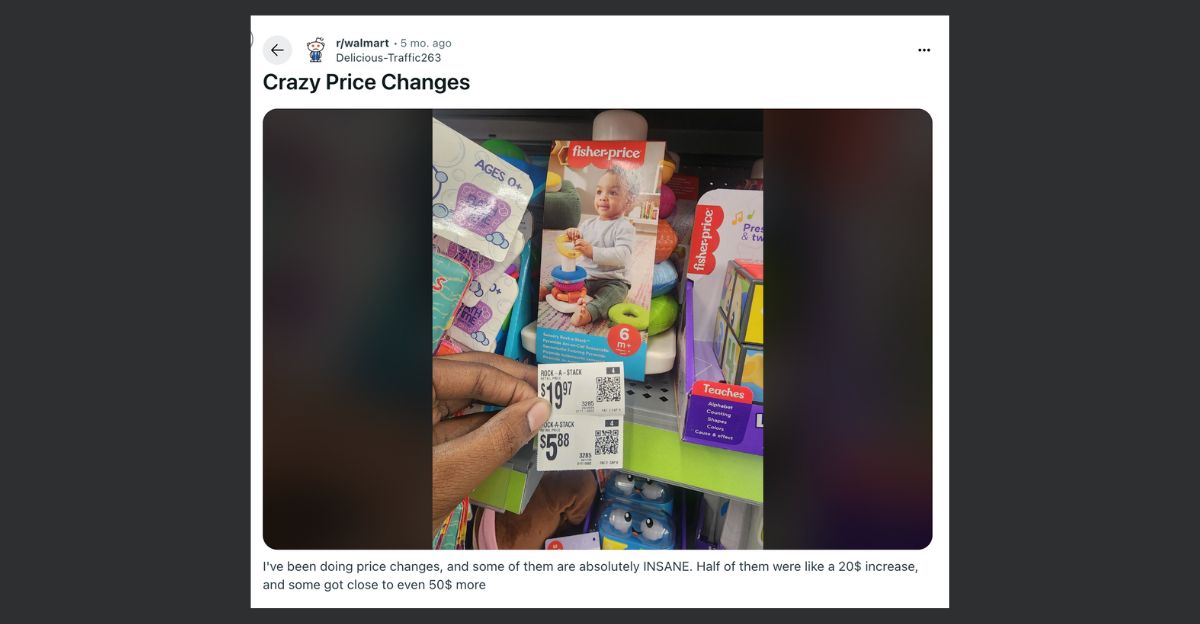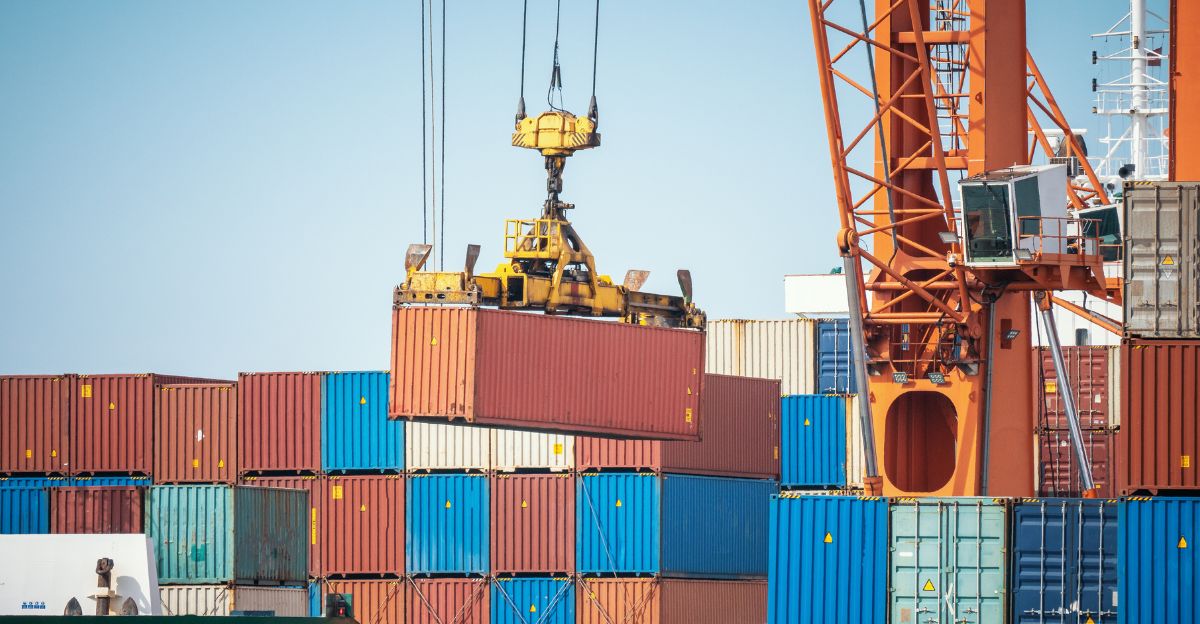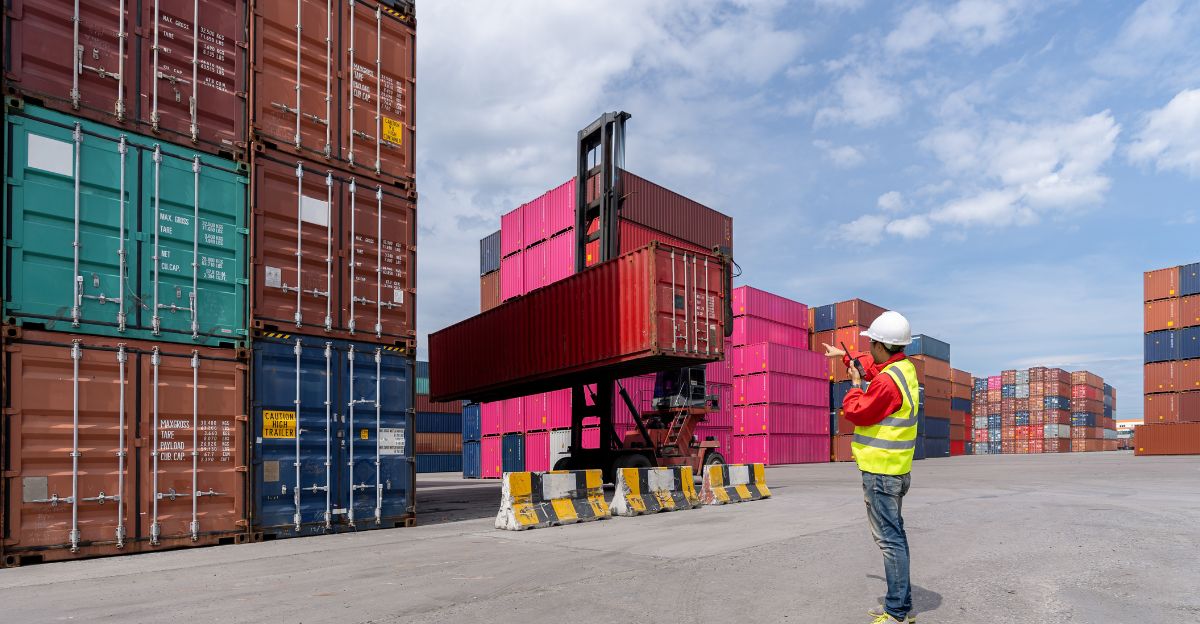
Something unusual is happening at Walmart. This week, shoppers and workers are spotting big price hikes on toys, groceries, and everyday items.
Some prices are rising by nearly half in just 30 days. People are sharing photos of the new tags online. What’s driving these changes? The answer links back to tariffs announced in Washington, now showing up on America’s store shelves.
Sticker Shock in Stores

Across Walmart locations in the U.S., employees and customers are noticing sharp jumps. Fresh stickers are going up with higher numbers, and shoppers are posting side-by-side photos of old and new tags to show how quickly things have changed.
Social Media Evidence

Much of the first buzz came from Reddit, where Walmart staff uploaded pictures of price changes. These posts quickly spread, giving the public a closer look at how steeply prices are moving in real time.
A 45% Jump

One of the clearest examples came from sporting goods. A left-handed fishing reel rose from $57.37 in April to $83.26 in May. That’s a 45 percent jump within weeks: proof of just how much tariffs can push prices.
Toys Going Up

The toy aisle tells a similar story. A Jurassic World T. rex climbed from $39.92 on April 27 to $55 by May 21. A Baby Born doll that cost under $35 in March was nearly $50 two months later. Parents are feeling the pinch.
Groceries Matter Most

Walmart makes about 60 percent of its U.S. sales from groceries. Even small increases here can affect millions of families. Cocoa powder, for example, jumped from $3.44 in 2024 to $6.18 in 2025, showing that food costs are not immune.
Why Prices Are Rising

The main reason is tariffs. In April, President Donald Trump announced a 10 percent tax on imports. Vendors passed these costs on to Walmart, and Walmart says it can’t absorb them all without raising prices for shoppers.
Walmart’s CEO Explains

Doug McMillon, Walmart’s CEO, put it simply: “We’ll keep prices as low as possible, but given the magnitude of the tariffs, we can’t take on all the pressure.” For a low-margin retailer, the math leaves little choice.
A Giant Retailer

Walmart’s size means these changes affect huge numbers of people. As of July 31, 2025, Walmart runs 5,206 stores in the U.S., including 4,606 Walmart locations and 600 Sam’s Clubs. When Walmart prices shift, millions of households notice.
Why Margins Matter

Walmart makes most of its money by selling lots of goods at low prices. Its thin profit margins mean that even small increases in supply costs show up quickly at checkout. Tariffs hit this model directly.
The Fast Timeline

Tariffs were announced in April. By May, Walmart was already raising prices. That short gap shows how quickly higher import costs move from global trade decisions to store shelves.
Other Retailers Too

Walmart isn’t alone. Many U.S. companies are also adjusting prices upward. The toy industry has warned that nearly every retailer relying on Chinese imports will feel the strain.
Toys Are Exposed

Most toys sold in the U.S. are made in China. That means nearly every part of the toy supply chain now costs more. With no way to absorb those costs, stores pass them to parents.
Political Response

When asked about toy prices, Trump downplayed concerns: “Maybe the children will have two dolls instead of 30 dolls.” His remark fueled debate about whether tariffs really protect U.S. jobs… or mainly just raise costs for families.
Shopper Reactions

Online, shoppers are voicing anger. Many share receipts or photos showing items marked up by double digits in a matter of weeks. Some say they’re cutting back or shopping elsewhere, but most note Walmart has few low-cost rivals.
Walmart’s CFO Speaks

CFO John David Rainey told reporters that Walmart’s strategy remains strong, but protecting profits while prices rise is a challenge. For now, the company is focused on managing growth and costs at the same time.
What Experts Worry About

Economists warn that if tariffs continue, more categories, from electronics to clothing—could rise in price. Long-term pressure may shift how families spend and how stores compete.
Budgets Under Strain

For the millions who shop Walmart weekly, a 30 to 40 percent increase on basics adds up fast. Families already stretched by inflation say they feel these hikes directly in their budgets.
Pressure for Transparency

With prices climbing, shoppers and experts are calling for more clear labeling about why costs are rising. Some want receipts or shelf tags to show when tariffs, not just supply shortages, are driving increases.
What Comes Next

For now, Walmart is passing costs along as tariffs take hold. Whether things settle depends on trade policy in the months ahead.
What started as a government decision is now being felt in the everyday purchases of millions of Americans.